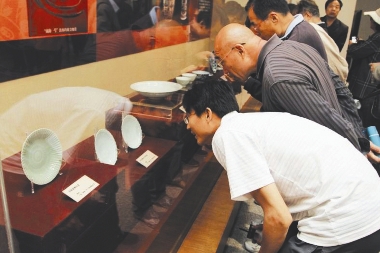 AN exhibition on sea treasures found in Qingdao was held at the Qingdao Museum on May 18 and the exhibit featured treasures such as porcelain tableware from the Song Dynasty (960-1279) found in the sea. A total of six pieces of tableware were displayed at the exhibition, which were shown to the world for the first time. “It is very impressive that the tableware still looks new after staying under the sea for more than 800 years. It can be seen that our ancestors had outstanding skills in porcelain making,” a visitor said. They were all discovered on the Nanhai No. 1 ship, which was discovered in 1987 in Yangjiang, Guangdong Province. It was a wrecked ship from the Song Dynasty (960-1279). More than 2,000 products including iron, gold, silver and porcelain products were found in the ship. Other treasures found under the sea were also exhibited at the museum, including some porcelain found in ships from the Yuan Dynasty (1206-1368). There was also an exhibition area displaying Qingdao’s achievements in archaeology, including ancient ruins such as Beiqian in Jimo, Dongyueshi in Pingdu and Shengjiazhuang in Jiaozhou. “It was the first time such a large number of cultural relics found in Qingdao had been exhibited. It educates viewers about the city’s ancient history,” said Liu Yuanming, president of the museum. The city’s archaeology could be traced back to the 1950s. In 2004, the city’s institute of cultural relics protection was established. The first batch of the country’s archaeologists specializing in working under water were trained in Qingdao in 1984. Two underwater cultural relics protection organizations were established in 2008 and 2010 in Qingdao, becoming one of the country’s most important bases for training archaeologists. (Wang Yuanyuan, Li Wei) | 
